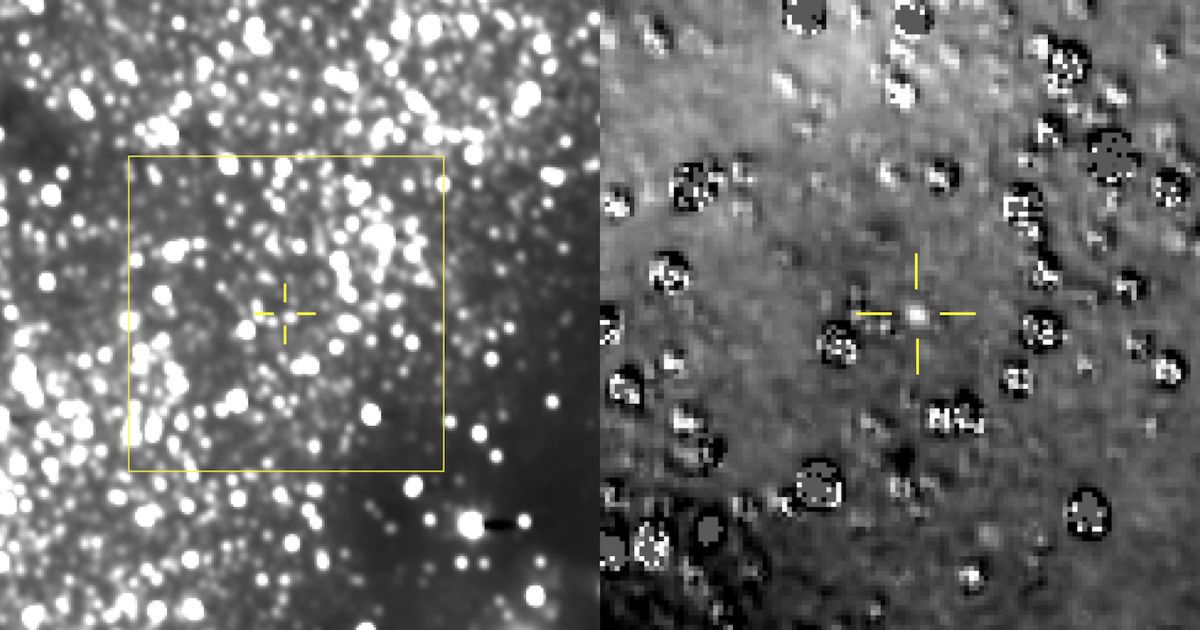Computer vision researchers have uncovered a world of visual signals hiding in our midst, including subtle motions that betray what’s being said and faint images of what’s around a corner.



Small leak discovered on Russian side of International Space Station, NASA says originally appeared on abcnews.go.com
A small pressure leak was discovered on the International Space Station, according to NASA.
Flight controllers at mission control centers in Houston and Moscow began seeing signs of the leak Wednesday night when the six-member crew aboard the orbital outpost were asleep. Flight controllers monitored the situation until the crew awakened at their normal time Thursday morning since they were in “no danger,” NASA said in a press release.

After NASA’s New Horizons spacecraft collected a trove of data from its six-month-long flyby of Pluto, it set its sights on a much smaller object in the Kuiper Belt — an object dubbed 2014 MU69. Scientists believe MU69 will likely be a rather preserved outer solar system object, one that could provide clues as to how dwarf planets like Pluto may have formed billions of years ago. Now the New Horizons team reports that it has snapped a picture of its distance target and it did so weeks before MU69 was expected to be visible to the spacecraft.
New Horizons is still about 100 million miles away from MU69 and the researchers didn’t think they’d be able to see the small object with New Horizons’ onboard cameras until around mid-September. “We thought it’s worth giving it a shot a month early,” Hal Weaver, the lead scientist working with the New Horizons’ long distance camera, told the New York Times. Through a few dozen images, they were able to make out the very faint MU69, an object under 30-miles wide. Being able to see it will help scientists refine New Horizons’ trajectory, though since the object was right where they expected it to be, it appears the spacecraft’s path is already pretty spot on. “The whole team is jazzed now,” said Weaver.
The spacecraft is expected to reach MU69, also known as Ultima Thule, on January 1st, 2019. It will mark the first close-up exploration of a small Kuiper Belt object and will be the most distant exploration of a planetary body to date. “It really is like finding a needle in a haystack,” Weaver said in a statement about the images collected earlier this month. “In these first images, Ultima appears only as a bump on the side of a background star that’s roughly 17 times brighter, but Ultima will be getting brighter — and easier to see — as the spacecraft gets closer.”


Like getting it on? NICE! But, um, still protect yourself. Times are tough, and the CDC is warning people about the increasing rates of STDs. Oh, also gonorrhea is starting to become more resistant to antibiotics. Have fun, but take care!


Starting today, Google’s Titan Security Keys are now on sale via the Google Store for $50. The kit provides buyers with two security keys, one of which can act as a backup, in case you lose the other.
Titan Security Keys look and function like any other security keys on the market, so don’t expect anything game-changing. But Google’s keys can help you protect your Google, Facebook, or Dropbox accounts from sophisticated phishing attacks.
A security key is a device that essentially adds another step to the account sign-in process. To break in, a hacker would need your password and the physical key, which can sign a digital authentication request to unlock your account.


By Yvaine Ye
The cleaner wrasse is only the size of a human finger but it has become the first fish ever to pass the mirror test – a classic experiment used to gauge self-awareness in animals.
Until now, only relatively intelligent animals – including apes, dolphins, elephants and magpies – have passed the test, which demonstrates whether an individual can recognise itself. But in 2016, two manta rays were filmed checking out their reflections in a mirror in a fish tank, suggesting that fish may be able to …
